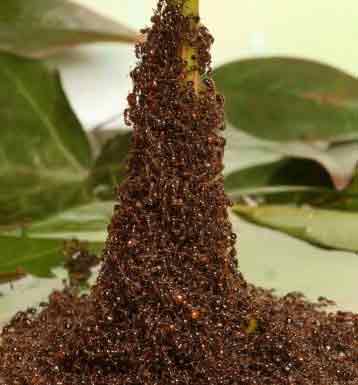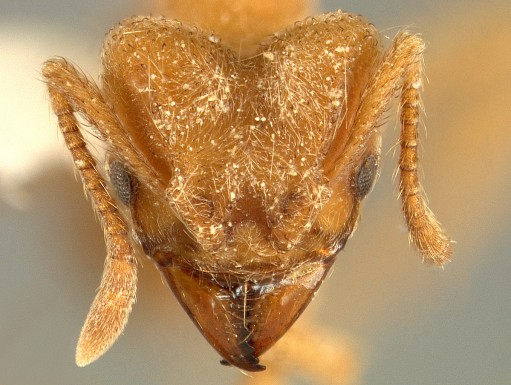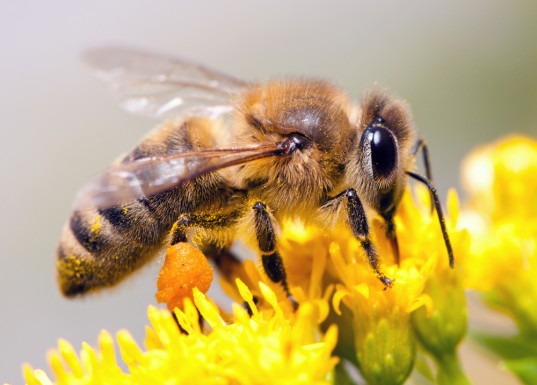To gain insights on how to program swarms of tiny robots, scientists are studying one of nature’s most cohesive species—fire ants.
When the insects work together, they’re a force to be reckoned with. The small creatures are capable of using their bodies to create towering structures of more than 30 stacked ants and buoying themselves into a raft so buoyant it stays afloat even when a human hand forces it under water.
Researchers at the Georgia Institute of Technology have been working for years to analyze how ants socially and physically form such elaborate globs without a leader or a discernable overall plan.
In a study recently published in the journal Royal Society Open Science, high-speed cameras show ants banding together to form a tower around a slippery rod. The coordination results in a bell-shaped structure, similar to that of the Eiffel tower.
Scientists had previously observed ants creating these towering structures from their own bodies, and the video offers a fresh look at the phenomenon.
The process to create these towers is less of a delicate dance and more trial and error. According to the study, an individual ant is capable of supporting as many as three other ants, which it connects to using sticky pads on its feet.
If an ant takes on more weight than it can bear, the ants fall away from the tower like a cascading avalanche. By continuously scrambling over each other, the ants are able to eventually build a solid base, building on each other from the bottom up.
Scientists believe this behavior is used as a temporary structure after events like floods. Scaling tall structures allows them to hunt for empty spaces in which they can create new homes.
Because the ants are continuously sinking, they must repeatedly climb over each other until they reach shelter, making their towers dynamic rather than static.
“The ants are circulating like a water fountain, in reverse,” one of the study’s authors told Nature.
Unsinkable Ants
The dynamics of their static structures was discovered by the same research group in 2014 when they studied how ants formed such robust raft structures.
By swirling a bunch of ants into a cup, the ants naturally formed a dough-like ball by grabbing onto each other with their sticky legs. Forming perpendicular to one another, the ants were able to evenly distribute their weight, creating a raft that floated even when one of the researchers fully submerged it in water.
While not known to be particularly intelligent as individuals, ants are adept at collectively working and communicating through a complex system of pheromones and sounds inaudible to the human ear.
Researchers hope that small robots can be programmed to form rafts and bridges of their own.
“Imagine robots that need to construct a barrier or patch a hole during a disaster response,” one of the 2014 study’s authors told Nature.
Source: NATIONAL GEOGRAPHIC





